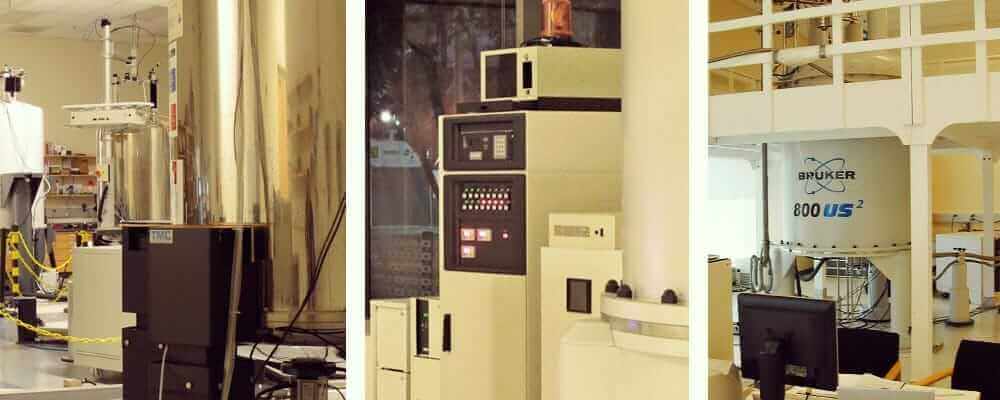
Nuclear Magnetic Resonance (NMR) takes advantage of small changes in the behavior of the nuclei in atoms that allows them to sense their chemical environment. Scientists can measure these changes using NMR spectrometers and Magnetic Resonance Imaging (MRI) systems to gain information about the bonds between atoms, the distance that separates them and their motions relative to each other. The nuclei are so sensitive to small changes in their environment that just by measuring the frequencies of the nuclei in the atoms of a chemical molecule, scientists can often identify the chemical they belong to with just this information alone. Adding the information about the bonds formed between atoms that can be read-out of the NMR signals, the molecular structure of a chemical or biological molecule (e.g. protein, DNA, RNA or carbohydrate) can be determined by NMR. Not only can this be done for single molecule, but this can be applied to mixtures of chemicals. NMR can also identify the environment a molecule is encountering and in this way, it can distinguish whether a molecule is in different tissues in the body.
NMR and MRI have many applications in the study of Quantitative Biology. Recently NMR has been used to characterize the changes in motions that are associated with disease mutations in large protein complexes (AAA ATPase) that likely lead to an imbalance of proteins in the cell and to characterize motions in nucleosomes, proteins that are essential for making DNA accessible for reading and for its packaging in the cell. NMR can also be used as very useful tool to help inn designing and optimizing proteins that can be used as sensors to detect specific drug molecules. Another very active research area is metabolomics where NMR is able to analyze and quantify changes in the populations of metabolites in diseased cells in tissues, and report on the molecular basis and progression of disease, as well as the effectiveness of drugs and treatments. Examples include research on and diagnosis of cancer and stroke. These are just a few examples of the many areas where NMR and MRI, in conjunction with many other types of research, can through the study of Quantitative Biology play an important part in understanding disease and medicine.